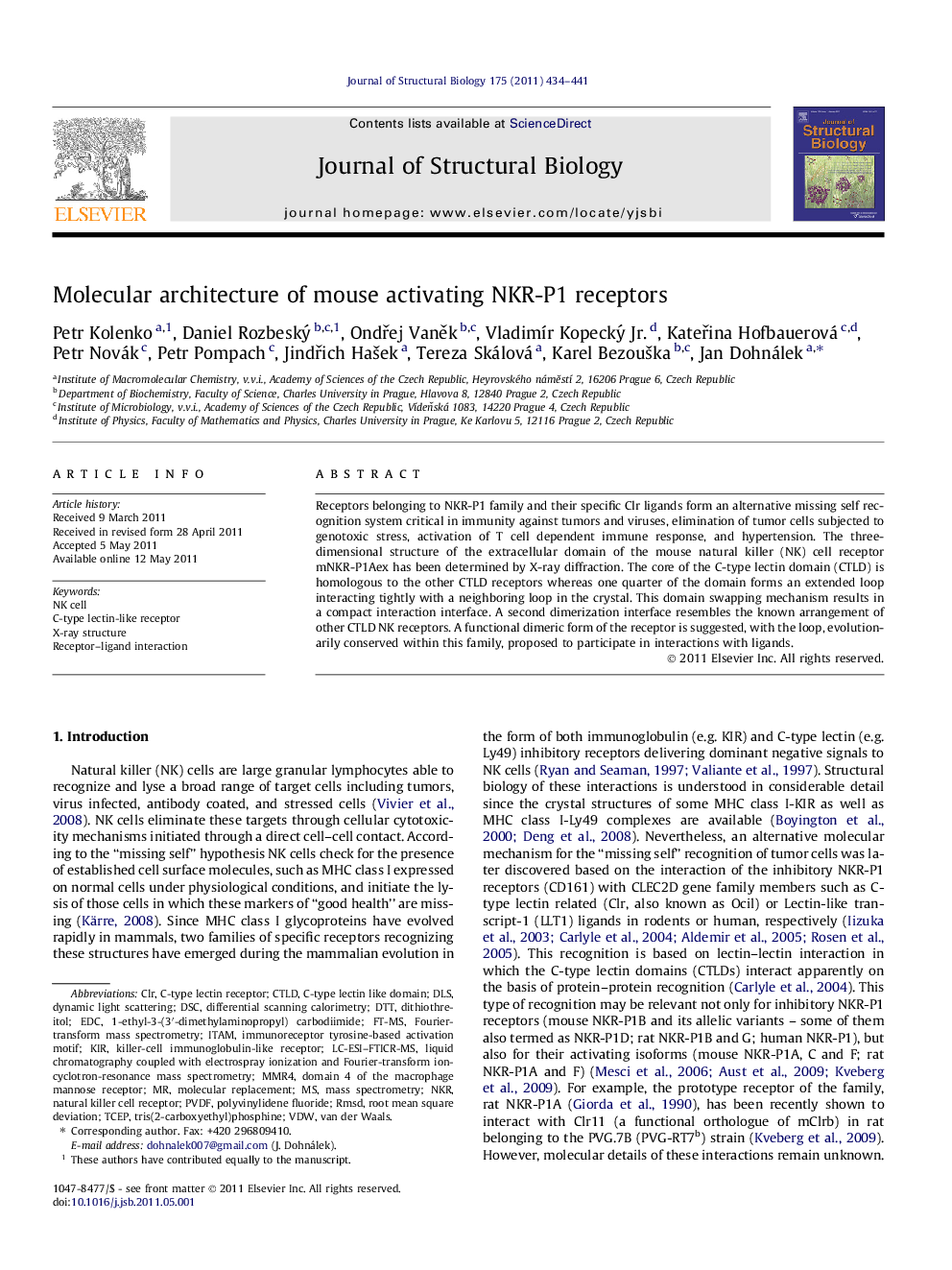| کد مقاله | کد نشریه | سال انتشار | مقاله انگلیسی | نسخه تمام متن |
|---|---|---|---|---|
| 5914801 | 1162754 | 2011 | 8 صفحه PDF | دانلود رایگان |
عنوان انگلیسی مقاله ISI
Molecular architecture of mouse activating NKR-P1 receptors
دانلود مقاله + سفارش ترجمه
دانلود مقاله ISI انگلیسی
رایگان برای ایرانیان
کلمات کلیدی
DLSNKRFT-MSNatural killer cell receptorCTLDITAMCLRKirRMSDDTTDSCEDCPVDFtris(2-carboxyethyl)phosphine - tris (2-carboxyethyl) فسفینvdW - VDWReceptor–ligand interaction - تعامل گیرنده-لیگاندmolecular replacement - جایگزینی مولکولیdithiothreitol - دیتیوتریتولX-ray structure - ساختار اشعه ایکسTCEP - ساکتNK cell - سلول NKFourier-Transform mass spectrometry - طیف سنج جرمی فوریه-تبدیلMass spectrometry - طیف سنجی جرمیimmunoreceptor tyrosine-based activation motif - مولکول فعال سازی مبتنی بر تیروستین ایمنورسپتورroot mean square deviation - میانگین انحراف مربع ریشهVan der Waals - وناروالسDynamic Light Scattering - پراکندگی نور دینامیکیPolyvinylidene fluoride - پلی وینیلیدین فلورایدDifferential scanning calorimetry - کالریمتری روبشی افتراقیkiller-cell immunoglobulin-like receptor - گیرنده ایمونوگلوبولین مشابه سلول قاچاقC-type lectin receptor - گیرنده لکتین نوع C
موضوعات مرتبط
علوم زیستی و بیوفناوری
بیوشیمی، ژنتیک و زیست شناسی مولکولی
زیست شناسی مولکولی
پیش نمایش صفحه اول مقاله

چکیده انگلیسی
Receptors belonging to NKR-P1 family and their specific Clr ligands form an alternative missing self recognition system critical in immunity against tumors and viruses, elimination of tumor cells subjected to genotoxic stress, activation of T cell dependent immune response, and hypertension. The three-dimensional structure of the extracellular domain of the mouse natural killer (NK) cell receptor mNKR-P1Aex has been determined by X-ray diffraction. The core of the C-type lectin domain (CTLD) is homologous to the other CTLD receptors whereas one quarter of the domain forms an extended loop interacting tightly with a neighboring loop in the crystal. This domain swapping mechanism results in a compact interaction interface. A second dimerization interface resembles the known arrangement of other CTLD NK receptors. A functional dimeric form of the receptor is suggested, with the loop, evolutionarily conserved within this family, proposed to participate in interactions with ligands.
ناشر
Database: Elsevier - ScienceDirect (ساینس دایرکت)
Journal: Journal of Structural Biology - Volume 175, Issue 3, September 2011, Pages 434-441
Journal: Journal of Structural Biology - Volume 175, Issue 3, September 2011, Pages 434-441
نویسندگان
Petr Kolenko, Daniel Rozbeský, OndÅej VanÄk, VladimÃr Jr., KateÅina Hofbauerová, Petr Novák, Petr Pompach, JindÅich HaÅ¡ek, Tereza Skálová, Karel BezouÅ¡ka, Jan Dohnálek,